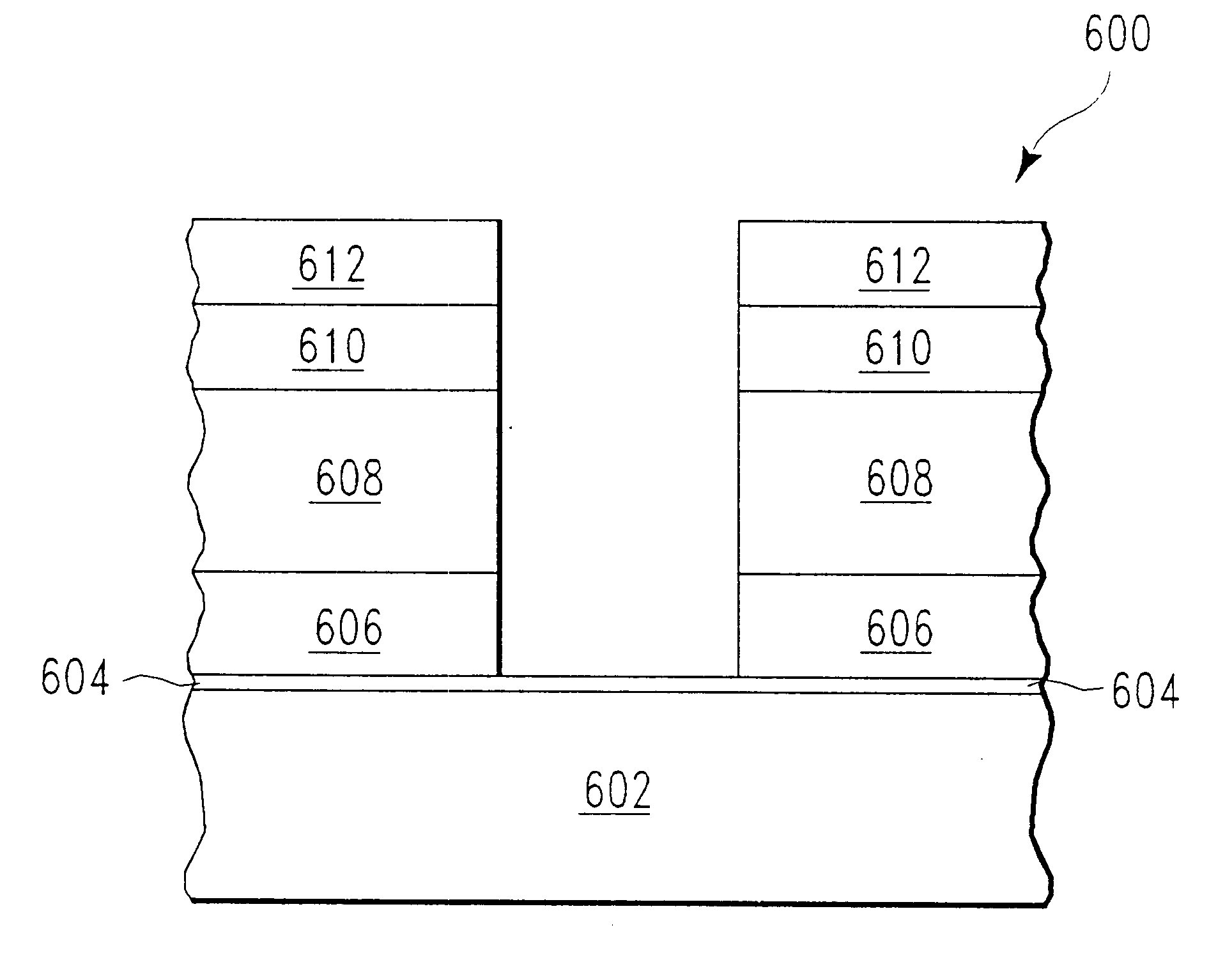Method of etching tungsten or tungsten nitride electrode gates in semiconductor structures
- Summary
- Abstract
- Description
- Claims
- Application Information
AI Technical Summary
Problems solved by technology
Method used
Image
Examples
Embodiment Construction
FIG. 2A shows a cross-sectional side view schematic of an etched tungsten structure 200, where the etched pattern is lines 203 and spaces 205. The line width is approximately 0.165 .mu.m, and the space width is approximately 0.21 .mu.m. The structure includes a thin (.apprxeq.45 .ANG.) silicon oxide layer 213 on a silicon substrate 202, overlying silicon oxide layer 213 is a 1650 .ANG. thick layer of tungsten 204, a 400 .ANG. thick image-focusing antireflective coating (ARC) layer 206, and the residue 208 of a photoresist layer which was used to pattern the etched structure 200. The tungsten layer 204 includes a thin (.about.100 .ANG.) wetting layer of tungsten nitride (not shown) which aids in adhesion of the tungsten to the silicon oxide layer 213. The tungsten nitride is etched during the same etch process as the tungsten. Therefore, as used herein, the term "tungsten layer" refers to a layer of tungsten, optionally in combination with a thin underlying layer of tungsten nitride....
PUM
| Property | Measurement | Unit |
|---|---|---|
| Fraction | aaaaa | aaaaa |
| Fraction | aaaaa | aaaaa |
| Fraction | aaaaa | aaaaa |
Abstract
Description
Claims
Application Information
 Login to View More
Login to View More - R&D
- Intellectual Property
- Life Sciences
- Materials
- Tech Scout
- Unparalleled Data Quality
- Higher Quality Content
- 60% Fewer Hallucinations
Browse by: Latest US Patents, China's latest patents, Technical Efficacy Thesaurus, Application Domain, Technology Topic, Popular Technical Reports.
© 2025 PatSnap. All rights reserved.Legal|Privacy policy|Modern Slavery Act Transparency Statement|Sitemap|About US| Contact US: help@patsnap.com



